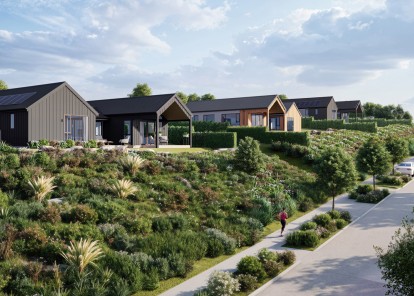Pilgrimage to Ryōan-Ji Temple, Japan's finest dry garden
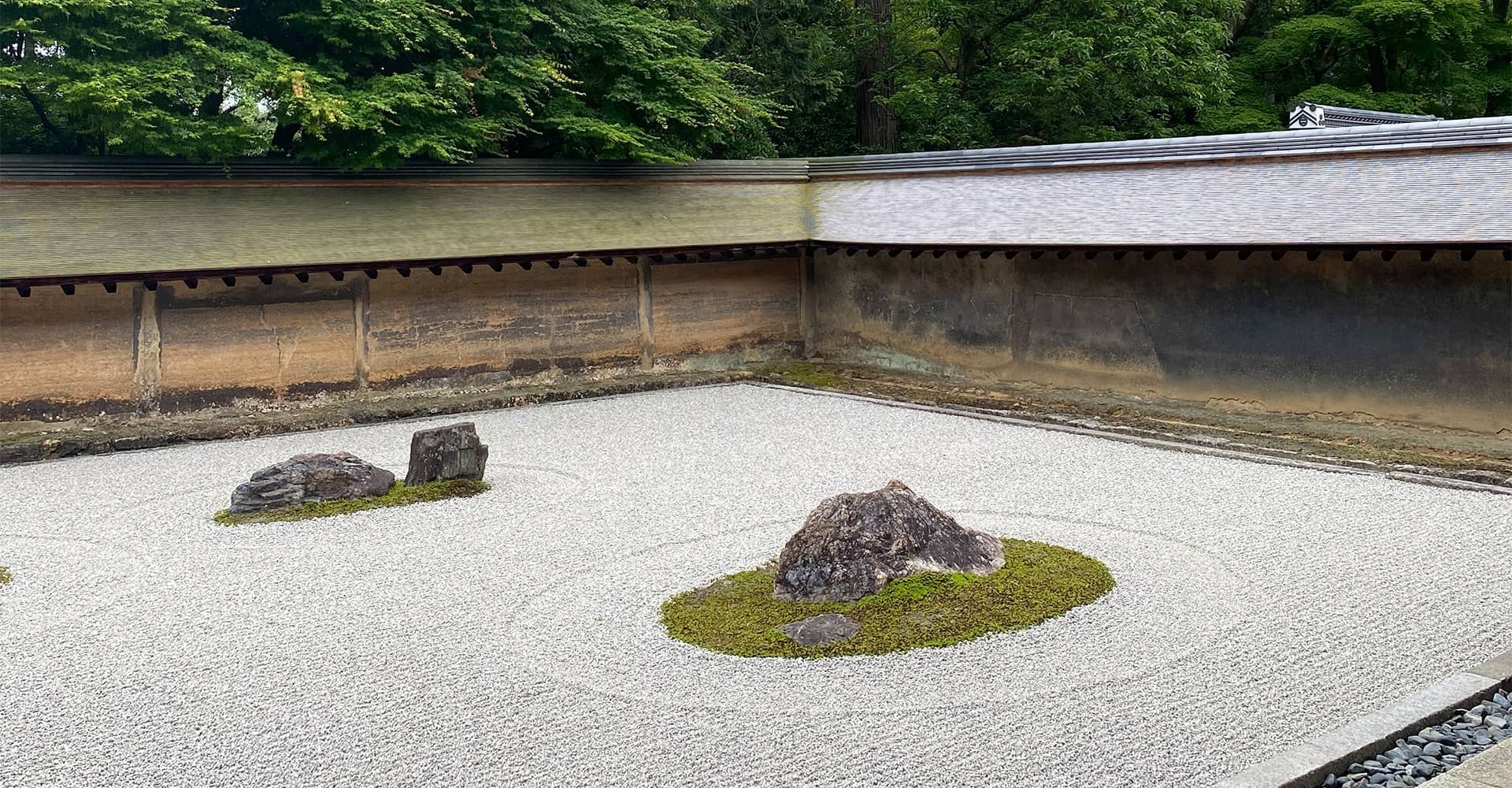
Epiphanies are by definition powerful life shapers and at age 24 on my OE, I recall having one visiting the Huntington Gardens in Pasadena Los Angeles, a sprawling 50 hectare estate created in the early Twentieth century by the Railway magnate Henry Huntington that features great European art works in its ornate European styled Manor and a collection of 16 themed gardens. The 4 hectare cactus garden the most famous. The estate and gardens were largely built to successfully lure his sweetheart future wife from high society in New York to the then frontier on the West Coast.
There in a relatively compact Japanese Garden at the Huntington Estate I casually wandered into the entrance and was confronted by a timber screen, free standing slatted from the bottom with a series of spaced 50 x 100 horizontals. Neither rails or beams these timber sections were supported a small diameter round pole which was largely concealed. There were no nails the screen seemed to float – I was stopped in my tracks with the power of this simple device that served to transition the visitor towards the contemplation of a gravelled space with several rock arrangements – this was full on orchestration of space and it was landscape space made animate.
It left an impression on me as I went on to do post graduate studies in landscape architecture and I digested books on Japanese Zen gardens and their details though restraining myself from trying to make literal gardens like the fad that swept post war suburban New Zealand. But it did take me several decades to actually visit Japan, until recently I returned from 5 days in Tokyo taking in the worlds largest city with its multitude of shopping and eating options. Then visited Kyoto 2 hours south on the speeding bullet train.
Kyoto is a city of 1.4million was the old imperial capital and is festooned with Temples and associated gardens. The city due to its inland location was not bombed in the Second World War and is largely intact though has expanded to take on a modern western city look. I tempered potential burn out by firstly visiting Ryōan-ji (Dragon at Peace) Zen Buddhist temple perhaps the most famous influence on generations of westerners from Frank Llyod Wright to David Hockney.
Like a good design pilgrim I did my research and headed off early to the north western edge of the city's foothills and got there on opening to avoid the crowds indicated by a sizeable bus park - thankfully empty. There were no big entrance gates or expansive lawns all was largely concealed under a forest canopy as I wandered along a stone path past a modest ticket cabin and then past a small lake, stone edged with a little island. The path followed the curve of the lake then was intercepted by a different path in straight sections leading into a zig zag past trees supported by poles before encountering a very wide ramped flight of steps. Alert now to this carefully laid out procession I climbed the still tree canopied flight of stairs to encounter a low and largely horizontal building.
This at last was the temple or “Hojo” a darkened timber structure that delicately embraced and extended into space through a series of screens and openings. Taking off shoes the visit wound around and opened out to a framed walled courtyard 10 m x 25m, occupied by an austere arrangement in corrugated raked white gravel and upright rocks.
This courtyard was not intended for gathering nor dining or recreating but was devoted to contemplation of a higher order. Designed and laid out in the 15th century this is one of the finest examples of "Karesansui" or dry garden that has come to epitomise classical Japanese garden design.
Strikingly the 15 rock and moss outcrops appeared island like each with its own character, the white gravel radiating lines out like an abstracted sea or pool. The edge to the courtyard stepped down from the viewing deck and was layered through a series of contrasting headers, warning visitors not to physically intrude. The 2.5m wall neatly enclosed the middle ground, rich with patina from clay and oil from over 5 centuries since the garden was created. There have been many interpretations on the meaning of the garden another one is tiger cubs crossing a river. I prefer just an abstract asymmetrical composition that incites meditation and mystery.
I sat enjoying the space, momentarily part of the framed background – then continuing on around the screened pavilion there were other devices to take in; trees with exposed root structure, pergola framed shelters and intricate paving.
Subtly placed also was a water basin with a bamboo feed pipe and a ladle, called a "Tsukabai" it is for ritual washing of the hands and on its top heavily inscribed like a coin in four Chinese letters was the directive “I learn only that I am contented”. At Ryōan-ji the surrounds, the paths, the Temple and gardens were to designed to enhance our appreciation of our place in the universe. All this made for a pretty compelling experience and much reflection. Then as the hordes of local school buses and European tourists invaded the peace, I hoped they got as much out of the visit as I did?
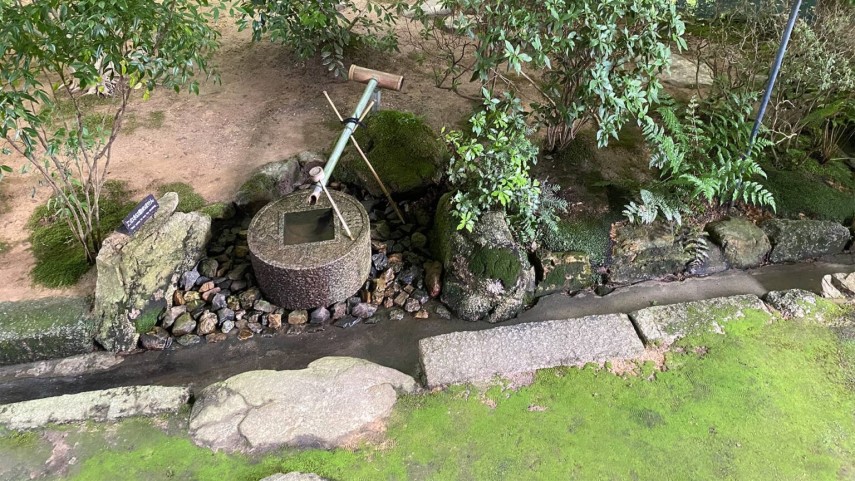
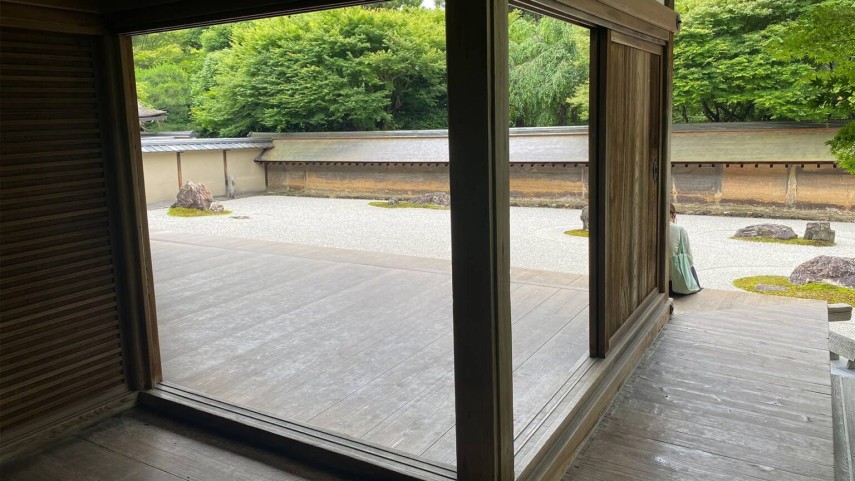
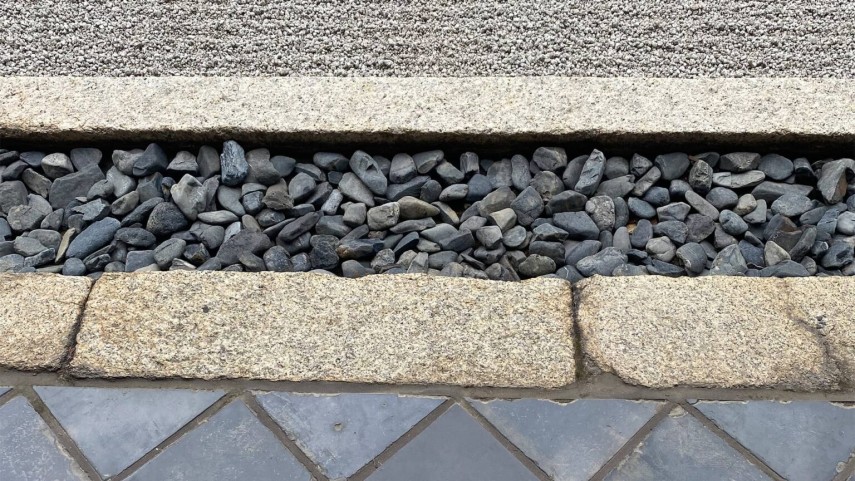
Published
5 July, 2023
Author
Garth Falconer
More articles Pitopito kōrero
Practice Tikanga
At Reset, we offer a broad scope of services within the specialist areas of Urban Design and Landscape Architecture. We also actively engage in research and have contributed two published books on the history of design in New Zealand.

